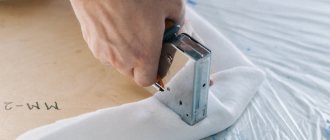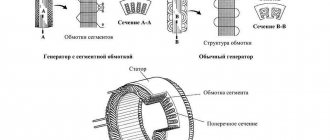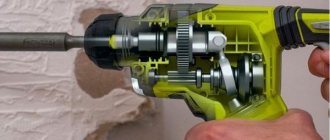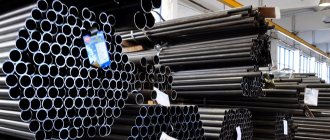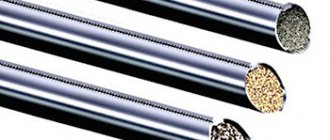GOI paste, developed back in the distant 1930s in the bowels of the State Optical Institute, has not lost its former popularity even now. You can hardly find an owner who doesn’t have a piece of this green (and sometimes other colors) product hidden somewhere. Let us remind you how to use GOI paste and give some tips on the safe use of this “greetings from the past.”
Types of GOI paste
Today there are four types of GOI paste on the market:
- No. 4 is used for primary processing of the material, if it has not been processed before;
- No. 3 gives the surface a matte appearance, eliminating all remaining strokes;
- No. 2 and No. 1 finish what their “older relatives” started, making the surface glossy and finishing the polishing.
The type of GOI paste depends on the size of the abrasive used in its manufacture. The paste was produced in a hard (bar) or softer (box) version. Why do we talk about GOI paste in the past tense? The fact is that at the moment, not a single Russian plant has the right to produce this product due to the presence of chromium oxide in its composition, which is hazardous to health - this compound is a carcinogen, i.e. it accelerates the development of cancer cells.
What is brass
Brass is a compound (alloy) of zinc and copper, to which lead, tin and other impurities are sometimes mixed. Due to its qualities, brass can often be confused with bronze, since this metal also contains copper. Copper gives the alloy its noticeable shade of golden color, compatible with brown. Brass is used quite often in production. Components of car spare parts, dishes, and pipes are made from this alloy. What adds to the popularity of this metal is that it is resistant to corrosion, so it is also widely used in the manufacture of plumbing elements.
The color qualities of this material, in the hands of a professional jeweler, can turn a simple piece of brass metal into a duplicate of any gold product, which, despite the cost, will look no worse than the precious metal.
Checking the real brass alloy in front of you is quite simple, you need to bring a magnet to it and if the metal is not attracted, then you have a pure alloy in front of you. This property is often used when using this metal to make compasses.
Unfortunately, this durable metal also has its drawbacks, namely, under the influence of external factors it oxidizes, turns green and blackens. Therefore, our article contains important information on how to clean brass at home, to maintain its shine and how to give it a marketable appearance if the product has already acquired negative qualities.
Preparation for polishing
The action of GOI paste consists of the work of small abrasive particles, which, through friction, erase irregularities from the surface. Before you start polishing, you need to prepare a small piece of soft cloth and soak it in gasoline (it is not necessary to use car fuel; gasoline for lighters will be enough). A small amount of paste is applied to the material. Using the prepared tool, you should first wipe the unnecessary metal surface to remove excessively large abrasive particles, otherwise the desired surface will not be polished, but damaged. You don't want to see a scratch on the surface after polishing, right?
How to protect brass
When carrying out work on cleaning brass, you should pay attention to the following tips to protect the alloy from foreign influences:
- the treatment area should be protected with a film with a waterproof effect;
- When performing work, you should use special clothing and gloves;
- carefully study the quality and negative consequences of using the cleaning product so as not to damage the item;
- It is worth studying the presence of substances in the alloy from which the item is made. If impurities are present, it is worth reviewing the cleaning procedure.
Attention! It is better to entrust the cleaning of antique items to a professional, since cleaning yourself can cause irreparable damage to the item.
Polishing
After preparing the polishing tool, you can begin the process. To properly polish a surface, you need to carefully, without sudden movements or strong pressure, rub the desired area with polish until the surface becomes smooth. If necessary, you should return to the previous stage (if the surface requiring polishing has a large area, the GOI paste will quickly run out).
We recommend: Cleaning the kitchen countertop from greasy stains
If the product has many flaws, you should use not just one type of paste, but several. So, for initial treatment, GOI paste No. 4 is applied to the rag, as the number of flaws decreases - No. 3, and so on, until the surface takes the desired form.
The treated element should be washed with kerosene in order to remove any remaining abrasive from it. In the absence of kerosene, ordinary running water can be used, but this is not recommended, since under improper conditions there is a high risk of rust. Considering that many polish the necessary surfaces in the garage, where there is often high humidity, this point should not be discounted.
Advice
Carry out polishing work outside residential premises. The ideal place would be a garage, workshop with good ventilation, or some open space. Polishing with GOI paste requires rinsing with kerosene, and inhaling its vapors is dangerous to health.
How to clean a brass samovar
Brass is the most popular material in the manufacture of samovars. Thanks to this alloy, the product acquires strength, a beautiful appearance and does not require a lot of labor during maintenance. Using a samovar for a long time causes its presentation to deteriorate and become dull. Using household chemicals available in retail outlets can damage the product. Therefore, the question arises, how to clean a brass samovar? To do this, we should offer you 3 effective ways to clean this popular item among art lovers:
- A mixture of ammonia and water in a 1:1 ratio.
- Homemade yogurt without impurities, which needs to be applied to the object and wait until it dries.
- A samovar soaked in vinegar should be sprinkled with salt and the object should be rubbed with a cloth soaked in vinegar.
After all of the above processing options, the item must be polished with a dry cloth and stored in dry rooms, since high humidity leads to stains.
Attention! When cleaning a samovar, it is prohibited to use abrasive substances, since if used, it can cause irreparable harm to the item.
Polishing soft metal products
GOI paste can be used to polish items made of any metals, including soft ones such as silver and gold. This procedure will help restore the former shine of your favorite utensils. But polishing such objects requires a special approach.
Let's look at the polishing process using silver spoons as an example.
- Before carrying out the procedure, you should thoroughly wash the spoons and clean them with a stiff brush (an ordinary toothbrush is ideal) with tooth powder applied to it.
- Then a solution is prepared containing ammonia, tooth powder and soap shavings. All this is mixed until completely dissolved.
- Spoons are soaked in the resulting solution.
- Then the mixture should be put on fire and brought to a boil.
- The spoons are removed, washed in running water and then wiped with GOI paste.
It would be better to use types of paste No. 1 or No. 2, since the other two can leave scratches on expensive utensils.
Working with cars
GOI paste is used for grinding and polishing body parts, headlights, mirrors and car windows. The body is processed with a power tool with felt attachments, the windows and headlights are polished with flannel. The type of paste used depends on the planned work:
- The medium composition (No. 3) is used to polish body parts. After sanding, the surface appears matte and requires finishing.
- Fine compounds (No. 2 and 1) are used to polish body parts and glass elements.
To determine which operation to start body work with, you need to run your fingernail over the problem area. If the nail clings to scratches, then the body is first sanded and then polished. If the nail does not cling to the scratches, polish it immediately.
Before work, body parts are moistened with glass cleaner or water. The speed of the polishing wheel is from 1100 rpm. A circle is driven around the body without stopping, maintaining an angle of 4-6 degrees between the nozzle and the part. The remaining paste is removed with warm water under low pressure.
Before polishing mirrors, glass and headlights, surrounding parts are covered with plastic film. The elements to be treated are pre-washed with either a soap solution, a glass cleaner solution, or a solution of technical alcohol. After washing, wipe dry.
When working, use a machine with a grinding wheel or a drill with a special attachment. The paste is ground into powder and mixed with machine oil. One drop of oil is needed per spoon of powder. The mixture is applied to a grinding wheel and rubbed over the surface with overlapping stripes. During polishing, make sure that the product does not overheat. Remaining paste is removed with a paper towel. Deep scratches are not suitable for polishing; they are filled with a colorless leveling compound.
Polishing plastic and glass products
It’s amazing but true: GOI paste can be used to restore old equipment to its former beauty! To polish plastic products, you should use GOI paste type No. 2, since more abrasive types can damage soft plastic.
We recommend: How to make fabric softener for your washing machine yourself?
It is worth noting that when polishing equipment, kerosene, gasoline and running water are not used. Only abrasive is applied to the rag, without the use of auxiliary products. The process itself is no different from polishing other materials and objects.
General information
GOI paste - what is it?
The abbreviation stands for State Optical Institute, where this cleaning powder was created in the 30s of the last century. Externally, this paste is a greenish mass, which is sold in the form of a smooth block or sealed in a jar.
Paste composition
The main ingredient of the paste is chromium oxide. Its concentration can be different, which determines the characteristics of the drug and its granularity. The more chromium oxide in the composition, the coarser the mass.
REFERENCE! This paste is harmless to humans, due to the fact that trivalent chromium oxide is used to create it, and only 6-valent chromium oxide is dangerous to people. However, when working with this drug, it is better to wear a mask and safety glasses, as when using it, dust may arise that irritates the human mucosa.
Types of pasta
There are several types of pasta that differ in grain size. Each of them has its own number.
- Number 1 - thin. It has a dark color, shimmering with green. Designed for grinding in or finishing the material, and also gives it shine and shine.
- Number 2 - thin. It has a dark green color. Used for polishing.
- Number 3 is average. Has a pure green color. Designed to protect minor scratches and unevenness, providing the material with a matte finish.
- Number 4 - rude. It has a light green color and can scratch off the top layer of material the most. Designed to protect large scratches left by other abrasives.
REFERENCE! The most popular is paste composition number 2, which is excellent for precious items, as well as plastic and glass.
If the green mixture has dried out, it can be made soft again. This is done using machine oil. You will need to grind a small piece of paste into fine crumbs and drop 3-4 drops of machine or other technical oil onto it. The resulting mixture should be microwaved for 30 seconds, and then grind the components into a homogeneous mass.
Where should you not use GOI paste?
It would seem that GOI paste is a universal remedy. But no, there are surfaces that should not be touched with this polish due to the fact that such a procedure will either make no sense or cause harm.
Firstly, you should not polish mechanical watches with GOI paste. Types No. 1 and No. 2 will only enhance the visibility of small scratches and emphasize them, and pastes No. 3 and No. 4 can simply erase the top layer of metal, causing the watch to lose its former luster.
You should also not use this product to polish sapphire crystals on watches - there will simply be no effect, since sapphire crystal is very durable.
Analogs
If the specified composition cannot be dissolved, or the resulting effect does not correspond to the desired one, you can replace this technical product with a complete analogue. For household needs, many craftsmen choose products from foreign manufacturers, which are distinguished not only by high technical characteristics, but also by a long shelf life, affordable storage conditions, and prices. Here are popular offers from foreign manufacturers:
- Rupes;
- Dialux;
- Depural Neo.
Precautionary measures
At the beginning, we mentioned that GOI paste is not currently produced in Russia due to its toxicity. However, it is sold freely in stores whose owners were able to supply the well-known polish. And if a person purchases this remedy, he should know some precautions in order to avoid tragedy.
- You need to use GOI paste extremely carefully, avoiding contact of its particles with the mucous membranes of the eyes and nose. If you are unable to protect yourself from this, immediately rinse the affected surface with running water and call an ambulance.
- Use a respirator or at least a medical mask when working with polish, especially when polishing metals using a cloth soaked in gasoline. You should not expose your body to the risk of poisoning from vapors of chemically complex substances.
- Keep children away from polish storage areas.
- Work with the product while wearing gloves to protect the skin of your hands.
So, GOI paste is an effective, but unsafe remedy. Even if you have used it for polishing many times, you should always be on guard when working. If the situation allows, it is better to use more gentle methods.
Special means
In addition to traditional methods, you can use chemicals specially designed and intended for cleaning brass products. Among the many products available on the market, it is worth highlighting two of the most popular:
Case
It is acidic in nature and quite well removes stubborn stains and traces of oxide on the outside of brass products. This product is actively used to remove traces of oxides when processing and restoring ancient coins. It must be used carefully so as not to damage the embossing.
Metalin
This is a chemical product for removing both old contaminants such as corrosion stains, mineral deposits, and simple fingerprints when using an item.
When using these substances, you should adhere to the following operating rules:
- these solutions should be diluted with water at room temperature in a concentration of up to 20%;
- when using, you should use a foam sponge or cloth, immersing it in the solution and soaking it for about 1-2 minutes;
- before starting work, check the brass object for the effect of the substance, preferably on an inconspicuous part of it;
- After carrying out work, thoroughly rinse the item and dry it.
Video
Found an error in the text? Select it, press Ctrl + Enter and we will fix everything!
Polishing copper jewelry after patination. Video tutorial. #video tutorial@ww_mk_ >#polishing@ww_mk_idea
Wire wrap. MK. Ideas. Examples. post pinned
Wire wrap. MK. Ideas. Examples. post pinned
GOI paste is considered one of the most famous and useful chemical products from the point of view of industrial and household use. Show in full... It is worth noting that the described product was developed back in the 30s of the last century and until today is a popular composition, widely used in the applied arts, technical industry, restoration, etc. This paste can be found in virtually any department or store with household goods or radio electronics. Despite the fact that a particular product is considered specialized, virtually everyone knows about its existence.
Features of the material and scope of application
Organic glass is produced from acrylic acid through various chemical reactions. This material is similar in various parameters to ordinary glass, but its nature is organic (hence the name of the material). There are several synonymous words - plexiglass, acryplast, carboglass, etc.
Among the main characteristics of plexiglass we can highlight:
- ease;
- softness;
- ability to easily transform;
- flexibility during processing;
- high throughput;
- When exposed to certain chemicals, plexiglass decomposes.


